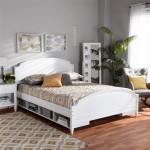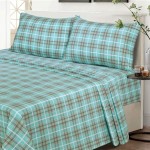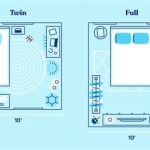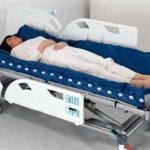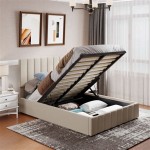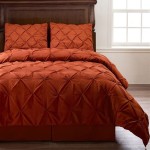Queen Size Bed In Foot: Decoding Dimensions and Space Planning
The queen size bed is a popular choice for individuals, couples, and guest rooms due to its versatile size and comfortable sleeping surface. Understanding the dimensions of a queen bed in feet is crucial for effective bedroom planning, furniture selection, and ensuring adequate space for movement and other activities. This article provides a comprehensive overview of queen bed dimensions in feet, explores factors influencing the overall footprint, and offers practical advice for optimizing room layout when incorporating a queen size bed.
The standard dimensions of a queen size mattress are 60 inches wide by 80 inches long. Converting these measurements to feet provides a clearer understanding of the physical space the mattress occupies. 60 inches is equivalent to 5 feet (60 inches / 12 inches per foot = 5 feet). Similarly, 80 inches translates to approximately 6.67 feet (80 inches / 12 inches per foot = 6.666... feet). Therefore, the mattress itself measures 5 feet wide by approximately 6.67 feet long.
While the mattress dimensions are a primary consideration, the bed frame significantly impacts the overall footprint. Bed frames typically add several inches to the mattress dimensions, depending on the style and design. A platform bed, for example, often has a minimal frame, adding only a few inches to each side. In contrast, a bed frame with a headboard and footboard can extend the length and width considerably. It is essential to consider the frame's dimensions when planning the bedroom layout.
Accurate measurement is paramount. Relying solely on manufacturer descriptions can be misleading. Before purchasing a queen size bed, measure the actual dimensions of the frame, including any headboard or footboard. This will prevent unexpected space constraints and ensure the bed fits comfortably within the intended area. Use a measuring tape and accurately record the width, length, and height. Documenting these measurements in feet will be helpful when planning the overall room design.
Beyond the bed itself, consider the surrounding space needed for comfortable movement. A common guideline is to allow at least two feet of clearance on each side of the bed and at the foot. This allows individuals to get in and out of bed easily and move around the room without obstruction. If the bedroom is small, prioritize clearance on at least one side of the bed for access.
The placement of a queen size bed dictates the flow of traffic within the bedroom. Ideally, the bed should be positioned against the longest wall, allowing ample space for walking around. Avoid placing the bed directly in front of doorways or windows, as this can obstruct access and natural light. If the room has an architectural focal point, such as a fireplace or large window, consider aligning the bed with this feature to create a visually appealing and balanced space.
Understanding the Footprint: Mattress vs. Frame
A significant distinction to be made is between the size of the mattress and the overall footprint of the bed, including the frame. The mattress serves as the fundamental sleeping surface, while the frame provides support and defines the bed's aesthetic. As previously stated, a standard queen mattress measures 5 feet by approximately 6.67 feet. However, the frame can dramatically alter these dimensions. A simple metal frame might add only a few inches, resulting in a total footprint of around 5.25 feet by 6.92 feet. Conversely, an ornate wooden frame with a large headboard and footboard could easily increase the footprint to 6 feet by 7.5 feet or even larger.
Consider a sleigh bed with its curved headboard and footboard. These features extend beyond the mattress, requiring additional space. Similarly, platform beds, while often minimalist in design, may have a wide base that protrudes beyond the mattress edge. Before making a purchase, obtain the exact dimensions of the entire bed frame, including the headboard, footboard, and side rails. This information is critical for determining if the bed will fit comfortably in the intended space.
Think of the space above the bed, as well. A tall headboard, while visually appealing, can impact the perceived spaciousness of a room, especially in smaller bedrooms with lower ceilings. Evaluate the headboard's height and ensure it complements the room's proportions. A low-profile headboard can create a sense of openness, while a taller headboard can make a statement but may require more vertical space.
The bed's components also contribute to the overall footprint. Some frames have built-in storage drawers underneath, which can extend the bed's length, especially when the drawers are open. Others might feature decorative elements, such as side tables or shelving integrated directly into the frame. These features add functionality but also increase the amount of space the bed occupies. Always factor in these components when calculating the bed's overall dimensions.
Optimizing Space with Queen Bed Placement
Strategic placement of a queen size bed is paramount for maximizing space and creating a functional and aesthetically pleasing bedroom. The room's dimensions, window and door locations, and existing furniture all influence the optimal bed placement. Start by measuring the bedroom's length and width, noting the position of any obstructions, such as closets, radiators, or electrical outlets. This will provide a clear understanding of the available space and potential limitations.
Consider the direction of natural light. Positioning the bed so that it receives soft, diffused light can create a calming and inviting atmosphere. Avoid placing the bed directly in front of a window that receives harsh sunlight, as this can cause discomfort and fade bedding materials. Ideally, the bed should be positioned perpendicular to the window, allowing natural light to illuminate the room without directly shining on the sleeping area.
The placement of bedside tables is also an important consideration. These tables provide convenient storage for lamps, books, and other essentials. Allow sufficient space between the bed and the bedside tables for easy access. A general guideline is to leave approximately 18 to 24 inches of clearance on each side of the bed for the bedside tables. This ensures that individuals can comfortably reach their belongings without having to stretch or contort themselves.
In smaller bedrooms, consider alternative bed placement options to maximize space. Placing the bed in a corner can free up valuable floor space in the center of the room. This arrangement works best when the bed is flanked by a wall on two sides, creating a cozy and intimate sleeping area. Alternatively, consider using a bed frame with built-in storage to eliminate the need for a separate dresser. This can significantly reduce clutter and free up floor space.
Think vertically. Wall-mounted shelves and storage units can provide additional storage without taking up floor space. Utilize vertical space to display artwork, books, and other decorative items. A tall, narrow bookshelf can fit neatly into a corner and provide ample storage without encroaching on the bed's footprint. Similarly, wall-mounted lighting fixtures can eliminate the need for bedside table lamps, freeing up surface space.
Frame Styles and Their Impact on Room Size
Different bed frame styles significantly affect the overall space utilization within a bedroom. A minimalist platform bed, for example, typically occupies less space than a traditional bed with a headboard and footboard. This difference in footprint can be crucial, particularly in smaller bedrooms where every inch of space counts. When selecting a bed frame, carefully consider the style and its impact on the room's overall flow and functionality.
Platform beds are characterized by their low profile and simple design. They often feature a solid or slatted base that supports the mattress directly, eliminating the need for a box spring. This design minimizes the bed's height and overall footprint, making it an excellent choice for smaller bedrooms. Platform beds typically have clean lines and a contemporary aesthetic, blending seamlessly with various interior design styles.
Sleigh beds, with their curved headboard and footboard, add a touch of elegance and sophistication to any bedroom. However, their curved design also requires more space than a traditional bed. The headboard and footboard extend beyond the mattress, increasing the bed's overall length. Before purchasing a sleigh bed, ensure that the bedroom has sufficient space to accommodate its larger footprint.
Canopy beds, with their four posts and overhead frame, create a dramatic and luxurious sleeping area. However, they also require a significant amount of vertical and horizontal space. Canopy beds are best suited for larger bedrooms with high ceilings. The overhead frame can make a smaller room feel cramped and claustrophobic. Careful consideration should be given to the room's dimensions before investing in a canopy bed.
Storage beds, which feature drawers or compartments built into the base, offer a practical solution for maximizing space in smaller bedrooms. These beds provide hidden storage for clothing, bedding, and other items, eliminating the need for a separate dresser. Storage beds are available in various styles and sizes, making them a versatile choice for any bedroom. However, be mindful of the space needed to open the drawers or access the storage compartments. Ensure there is sufficient clearance around the bed to allow for easy access to the storage areas.
Adjustable beds, which allow users to adjust the mattress's position, are gaining popularity for their comfort and therapeutic benefits. However, these beds often have a larger footprint than traditional beds due to the motorized components and adjustable frame. Before purchasing an adjustable bed, measure the room carefully and ensure that there is sufficient space for the bed and its adjustable features. Also, consider the weight of the adjustable bed, as it may require additional support.

Queen Size Bed In Feet

Queen Bed Dimensions Guide Size In Feet Inches Centimeters
Queen Size Bed Dimensions In Feet

King Queen Size Bed Dimensions Guide 2024 The Hindu

King Size Bed Dimensions In Feet Google Search

King Vs Queen Bed Measurements Layla

King Size Vs Queen Bed Difference Comparison Guide

Bed Sizes Why Would You Need A 9 Foot Well I M Glad Asked Have Dogs And Husband Who Sleeps In The Middle It Be Perfect For

Guide To Selecting The Mattress Sizes And Dimensions

Adjustable Bed Frame Queen Size Electric Base With Wireless Remote Head And Foot Incline Easy Assembly


